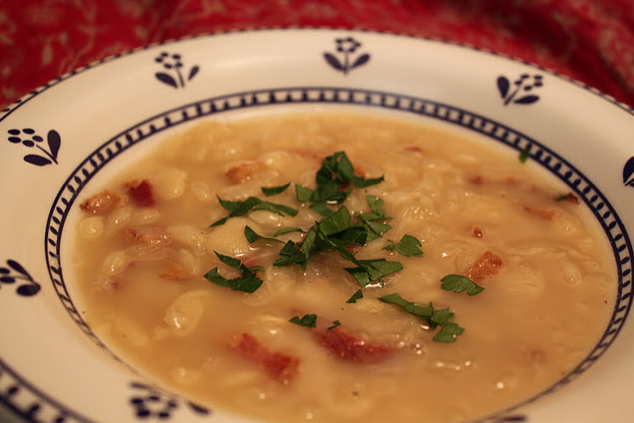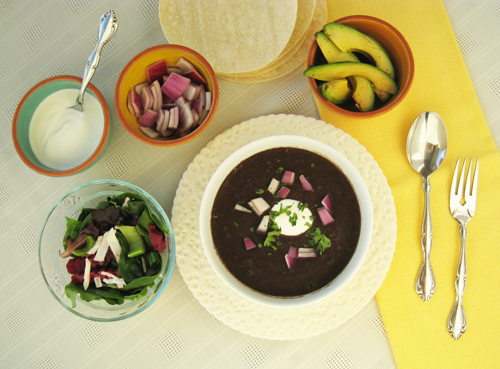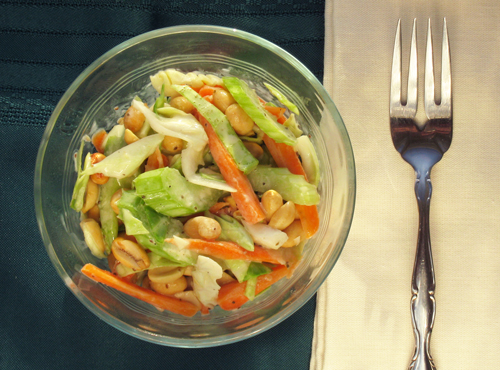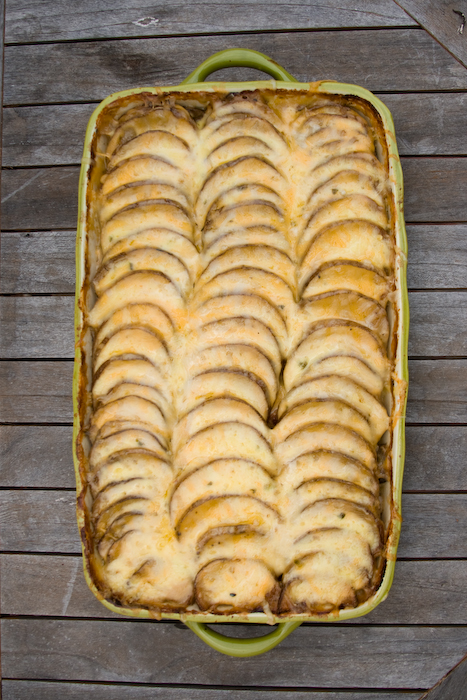
The quick answer: To live longer, eat like a peasant—enjoy whole foods, which have more nutrients and fewer calories—beginning with soup.
________________________________________________________________________________________________
The Folly of Metrics
You’ve heard the management truism about the value of metrics? It says that whatever we measure will improve, that if we report the measurement it will improve more, and if we set goals for the measurement, it will improve faster. I was a fan of metrics in my youth because of their power to direct behavior. I’m still a fan but with this caveat—the most important things don’t lend themselves to measurement. (Confession: one metric in my life is the number of daily readers of this blog—your visits help to make my day.)
Love, for example, is essential to our happiness, but have you ever tried to measure it? So there is this danger, you know, that in life we may be measuring the wrong thing. Do you think money will make you happy? It will definitely increase your options, but it tends to interfere with the source of true happiness: love. So be cautious about counting your money too often.
Here’s another example of a metric gone awry: calories. In the early days of nutrition science, in the late 1800s, they learned to measure the calories in food. Because it was easy to do and there were few other metrics, calories got a lot of attention. The dominance of this metric led to the false idea that calories caused overweight and that the cure for overweight was to count and restrict calories. If you look around, you can see the error of these assumptions—the more we focused on calories, the more overweight we became.
In a prior post—The Skinny on Overweight—we posited that the quality of our calories was more important than the quantity. If you wanted to reach a healthy weight, rather than count calories, you should change the nature of your food.
The issue here is that whole foods are full of fiber and very filling. They’re also high in nutrients and low in calories. Processed foods are the opposite, high in calories and low in nutrients. So if you eat mostly whole foods, you’ll get plenty of nutrients but not too many calories. We won’t all have the same figure if we do this—that would be boring. But we will achieve the goal of this blog: Eat smarter, look better, and live longer.
Starvation Recipes
Making money a primary metric leads to foolish behavior. Out of control borrowing, especially in Greece, has been a financial disaster for the European Community. In street demonstrations, the Greeks have defied the reality of their plight, but nonetheless, hard times are in their future. This isn’t necessarily a bad thing. Though difficult, it’s essential to learn to live within one’s means. Here in the US, we’re having our own hard experience.
So how do you survive in a tough economy? If you read Greek, buy the new cookbook, Starvation Recipes, written by a woman of Athens. During WWII, occupied Athens suffered severe food shortages and people became very creative about conserving food. The author studied WWII era newspapers and collected ideas and recipes for surviving on less. The book is selling well. Which all leads to this week’s subject: the nutritious economy of soup.
Living Longer
A friend suggested I listen to a podcast titled, “Can We Reverse Aging?” The podcast reminded me of other truisms:
- Across all species, the larger animals live longer. Blue Whales, the largest of mammals, can live 200 years; the mayfly lives but a few hours.
- Conversely, within a single species, the smallest live the longest. That’s good news for the beautiful wife, at 5 foot, 2 inches.
- A longevity pill would be worth billions, so scientists are hard at work. The research to date has shown just one way to slow aging—eat less calories.
- Studies of varied species prove that as long as long as nutrients are adequate, life is extended, even doubled, by reducing calories.
A word of caution—caloric restriction hasn’t been tested on humans. There is interesting literature on longevity improvements in Denmark and Scandinavian countries during WWII food shortages. The calorie-restriction findings are bad news for Americans because our daily calorie intake has steadily increased in recent decades. As our diet has gone off the tracks, overweight has increased in step.
An Interesting Woman
This all leads to a UCSF professor born in Tasmania: Elizabeth Blackburn. Blackburn earned a Nobel Prize for discovering the enzyme that regenerates telomeres. Telomeres, you will recall, are the protective tails on the chromosomes that protect the DNA within each of our cells. Aging is linked to the shortening of our telomeres so the enzyme that restores them could also extend our lives. (Shortened telomeres have also been linked to cancer risk.)
Blackburn’s current interests are reported to include how stress harmfully shortens telomeres, the cancer risk of shortened telomeres, and how eating less calories helps to restore them. The drug companies would love to discover a molecule that lengthens telomeres, thus lengthening life and reducing cancer risk. A lot of money will be spent on telomere research, but I think it unlikely a pill is the answer. Where is the answer more likely to be found? By rediscovering recipes for traditional foods.
A Word About Recipes
Going off-subject for a moment, UNESCO has compiled a list of world heritage sites, seen here. Checking out the sites on the list is to take an exotic vacation without leaving your home. Traditional recipes (returning to our subject) are also a world heritage. The other day, the beautiful wife was making Christmas cookies with a recipe handed down from her mother. The recipe is in her deceased mother’s handwriting so I saw it as a family heirloom.
If you’re mathematically inclined, you can figure out that inventing a simple recipe of, say, 8 ingredients with each tested at three different amounts, requires over 6000 batches to test all the combinations. This is an impossible task. So a well-evolved recipe, tested by time in many kitchens, is truly a heritage. Can you see a good recipe as a treasured algorithm distilled from eons of cooking experiments?
I subscribe, from time to time, to Cooks Illustrated. They have a great test kitchen and like to improve or invent recipes. If I’m currently subscribed, it’s because I like all the background information about why you do certain things, or use certain ingredients. If I’m not paying for it, it’s likely because they don’t focus enough on health, or because they may over-complicate recipes in search of a certain taste most of us can’t discern. For everyday cooking, recipes must be kept simple.
I’ve looked for blogs that offer recipes with the idea of linking to them. It’s been a disappointing search. I’m wary of commercial blogs. Only a few blogs have a real focus on health. To catch people’s interest many blogs use exotic ingredients and my focus is to be more practical. Here are the recipe essentials I look for: Healthfulness, Value, Simplicity, and Taste.
So I was pleased to see the blog, Peasant Food. Two sisters are putting ideas we support to work by combining traditional healthy foods with the tools of the modern kitchen. They have a love affair with legumes (the best value in food) and offer their Butterbean and Bacon Soup recipe, shown in the picture above. I’m going to try their recipe.
Skip’s Recipes
My approach to recipes is to make a statistical survey. I look at dozens of recipes and search out trends in ingredients. When a trend is visible, I look at the healthiness of the ingredients. Then, I look for simplicity and value (yeah, no truffles). Finally I make the recipe and convene a tasting panel. (Another source of recipes is our readers—we're making a list of the best to share.) Sometimes the panel is the beautiful wife, but my favorite panel is a bunch of grandchildren. They love tasting food—kids don’t usually get to give out the grades.
I once was working on a homemade macaroni & cheese recipe and though I didn’t find the perfect recipe, I was pleased the grandchildren liked my efforts more than the Kraft version we used for comparison. Kids will eat packaged foods, but they prefer real food. (This was a single-blind test, meaning the grandkids didn’t know the origin of the tasting samples.)
Soup Recipes
Soups vary around the world, according to the ingredients at hand. In the US the most popular soup recipes are tomato, chicken, potato, onion, clam chowder, and perhaps black bean soup. Campbell’s would argue Cream of Mushroom, but I think it is used more as an ingredient than as a soup.
We previously offered recipes for split pea soup, and chicken soup. We don’t have a recipe for tomato soup; we usually buy Trader Joe’s. “Is this an example,” I asked the Beautiful Wife, “of a soup that’s just as well purchased as made at home?” “Perhaps,” she said, “but you can’t beat the tomato soup served at Nordstrom’s.” She’s right. Nordstrom’s recipe was published in their cookbook and versions can be found on the Internet so I decided to make potato soup the subject of this post.
Potato Soup
The humble potato—like wheat, rice, or corn—is a dietary mainstay in certain regions of the world. Potato soup is a heritage dish, economical, tasty, and easy to make. You can make it with any variety—Idaho russets, the red new potatoes, or even sweet potatoes. The russets are softer when cooked; the new potatoes are firmer. The following recipe worked with both. (Caution: If you store potatoes, keep them out of the sun and remove any sprouts or green spots before using, as they contain the toxin solanine.)
Common ingredients from our survey of potato soup recipes:
- Potatoes, onions, celery—this is the basis of nearly every recipe. Sometimes the 3rd mirepoix ingredient, carrots, is added.
- Chicken broth.
- Milk, thickened with roux. (An alternative is to thicken by adding cheese at the end of cooking.) Older recipes include cream but I used whole milk.
- If you’re feeling prosperous, bacon or ham. (But add less salt.)
Potato soup recipes require little flavoring. Typically they include thyme, salt and pepper, and a little chopped parsley as garnish. Other flavor combinations:
- Garlic, cumin, red pepper flakes.
- Mustard/Worcestershire sauce, allspice.
Warning: You can tell the recipes from the ‘50s and ‘60s, when food began to go off the track. Chicken stock is replaced by bouillon cubes in water; butter (for the roux) is replaced by margarine; and celery salt is substituted for fresh chopped celery. In this era, convenience blindly passed from virtue to vice.
Skip’s Potato Soup
Ingredients:
3 C. potatoes, washed and cubed
1 C. white onion, chopped
2/3 C. celery, chopped
3 C. chicken stock
3 strips bacon
2 C. milk (some recipes include cream)
2-3 T healthy fat (to sauté)
2 T butter or bacon fat (for roux)
2 T flour
½ tsp. each thyme, salt, and ground pepper
Directions:
- Place stock in large soup pot and heat to boil. While stock is heating cube potatoes (washed, but unpeeled) and place in soup pot. Chop the onion and celery.
- In a frying pan cook the bacon; chop and set aside. Leave 2-3 T bacon grease in pan.
- Sauté the onions and celery in pan, starting onions first. Add the sautéed onions, celery and flavor (thyme, salt, pepper) to the soup pot.
- Reusing the frying pan, make roux with butter/bacon fat and flour; cook about a minute. Stir in milk and cook 5 minutes to thicken (do not boil). Add to soup pot.
- Continue cooking soup until potatoes are tender. Remove about half the soup to a blender and puree. Return to soup pot. Add chopped bacon, adjust salt and pepper if needed, and garnish with chopped parsley. Serve.
We served this with a spinach salad and corn bread. This morning the Beautiful Wife returned from walking and talking with her friends; she exclaimed upon entering the house, “It smells so good!” So this recipe will also make your home smell good. I took some of the soup to the grandchildren for taste testing (one mom had just delivered a new granddaughter; the other was gone on a photo shoot). Grandchildren love soup. If there’s extra soup, freeze a quart for later.
Please comment: Share your favorite soup recipes. Oh, one other comment, did you think this post too long? If so, my apology; one thing just led to another.

 Tuesday, March 13, 2012 at 10:50PM | by
Tuesday, March 13, 2012 at 10:50PM | by  Skip Hellewell |
Skip Hellewell |  14 Comments | | in
14 Comments | | in  dinner,
dinner,  recipe |
recipe |  Email Article
Email Article 















